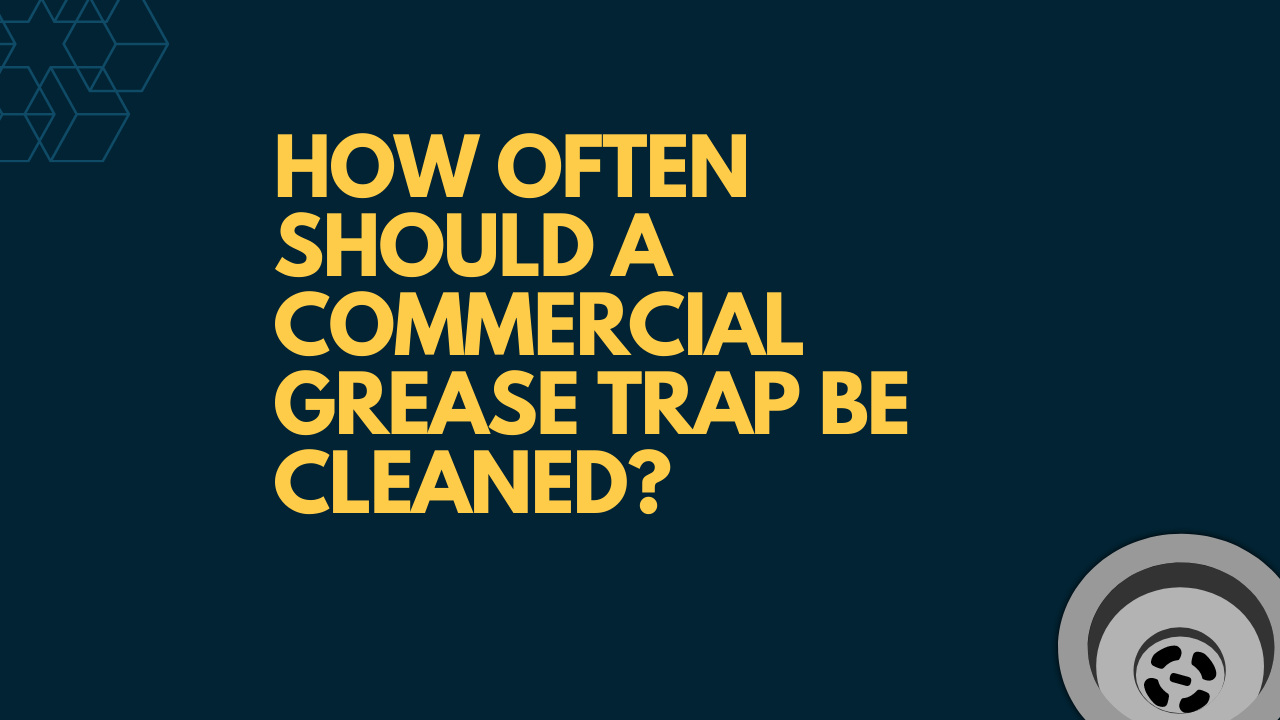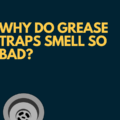Who is this article for – This article is specifically geared towards individuals, particularly those employed in kitchens and food service facilities, seeking information on the cleaning frequency required for a commercial grease trap.
Are you searching for answers on the cleaning schedule for a commercial grease trap? This article is here to provide you with the information you need. We will cover the topic of grease traps, their advantages, and most importantly, how often should a commercial grease trap be cleaned or the recommended frequency for cleaning them. So, keep reading to learn all about it. If there are any questions that go unanswered, feel free to leave a comment.
What is a commercial grease trap?
A commercial grease trap is a device installed in the plumbing system of commercial kitchens and food service facilities to prevent grease, oil, and food particles from entering the sewer system.
It works by capturing the grease and solids from the wastewater, which would otherwise cause clogs and other problems in the sewer lines. The captured grease and solids are stored in the grease trap until they can be safely and legally disposed of.
Commercial grease traps are typically made of metal or plastic and come in different sizes to accommodate the varying needs of different types of kitchens and food service facilities. The traps have an inlet and outlet that allow wastewater to flow through, while the grease and solids are collected in a separate chamber.
Some grease traps also have a separating device or baffle to further separate the grease and solids from the wastewater. The size and design of the grease trap determine how often should a commercial grease trap be cleaned and emptied. We will talk more about it later in the article.
What are the benefits of installing a commercial grease trap?
The benefits of installing a commercial grease trap in a kitchen or food service facility include:
- Prevents clogs in the sewer system: Grease traps help to prevent clogs in the sewer system by capturing grease, oil, and food particles before they enter the pipes. This helps to prevent backups and overflows, which can cause damage to the plumbing system and create health hazards.
- Reduces maintenance costs: By preventing clogs in the sewer system, grease traps help to reduce the need for costly repairs and maintenance.
- Complies with regulations: Many local health departments require commercial kitchens to have grease traps installed to comply with regulations. Installing a grease trap helps to ensure compliance with local regulations.
- Protects the environment: Grease traps prevent grease and other pollutants from entering the sewer system and polluting local waterways.
- Improves kitchen efficiency: Grease traps can improve the efficiency of a kitchen by preventing clogs and backups, which can slow down the kitchen’s operations.
Having a grease trap also helps keep the overall working environment safe for workers in a kitchen or food service facility.
In summary, a commercial grease trap provides numerous benefits, including preventing clogs and backups, reducing maintenance costs, complying with regulations, protecting the environment, and improving kitchen efficiency.
How to know it’s time to clean a commercial grease trap?
There are several signs that indicate it’s time to clean a commercial grease trap:
- Slow Drainage: If you notice that water is draining slowly from sinks, dishwashers, or other plumbing fixtures, it could be a sign that the grease trap is full and needs to be cleaned.
- Bad Odors: A grease trap that is full or not functioning properly can produce unpleasant odors that can be noticeable in the kitchen or surrounding areas.
- Overflow: If you see grease, oil, or food particles overflowing from the grease trap, it’s a clear sign that the trap needs to be cleaned and emptied.
- Increase in Grease and Solids: Regularly monitoring the amount of grease and solids stored in the grease trap is important to ensure it’s functioning properly. If you notice an increase in grease and solids, it may be time to clean the grease trap.
- Health Inspections: Many local health departments require that commercial kitchens have their grease traps inspected and cleaned regularly. If you receive a notice from the health department that it’s time for your grease trap to be cleaned, it’s important to comply with their request.
How often should a commercial grease trap be cleaned?
Commercial grease traps should be cleaned and emptied regularly to ensure they continue to operate effectively and to prevent clogs, bad odors, and health hazards. The frequency of cleaning required will depend on various factors, including the size of the grease trap, the volume of grease and solids generated by the kitchen, and local regulations.
As a general guideline, most local health departments require that grease traps be cleaned every 3 to 6 months, or when they are around 25-50% full. Some businesses with high-volume kitchens may need to clean their grease traps more frequently, such as every 1 to 2 months.
Note – It’s important to keep in mind that different grease traps may require different cleaning frequencies, so it’s best to consult with a professional service provider and your local health department to determine the appropriate schedule for your grease trap.
FAQs on How often should a commercial grease trap be cleaned?
A commercial grease trap is a device installed in the plumbing system of commercial kitchens and food service facilities to prevent grease, oil, and food particles from entering the sewer system.
Cleaning a commercial grease trap regularly is essential to prevent the buildup of grease, fats, oils, and other solids that can clog the trap and lead to sewage backups, foul odors, and potential health hazards. Regular maintenance of a grease trap not only ensures the smooth operation of a commercial kitchen but also promotes sustainability and responsible waste management.
A restaurant or other commercial kitchen should have its grease trap cleaned at least once every 90 days or more frequently based on usage and local regulations. More frequent cleaning may be needed for big establishments.
Failing to clean a commercial grease trap on a regular basis can have serious consequences, including clogs and backup, foul odors, health hazards, fines environmental impact.
Please refer to the “How to know it’s time to clean a commercial grease trap?” section in the article for an informed answer.
Cleaning a commercial grease trap requires specialized knowledge, tools, and equipment, and is best left to professional services that are licensed and trained to handle the task safely and efficiently. It is not recommended for business owners or employees to clean grease traps themselves as it can be hazardous, time-consuming, and may result in non-compliance with local regulations.
We recommend seeking assistance from a professional grease trap cleaning service provider for expert help.













